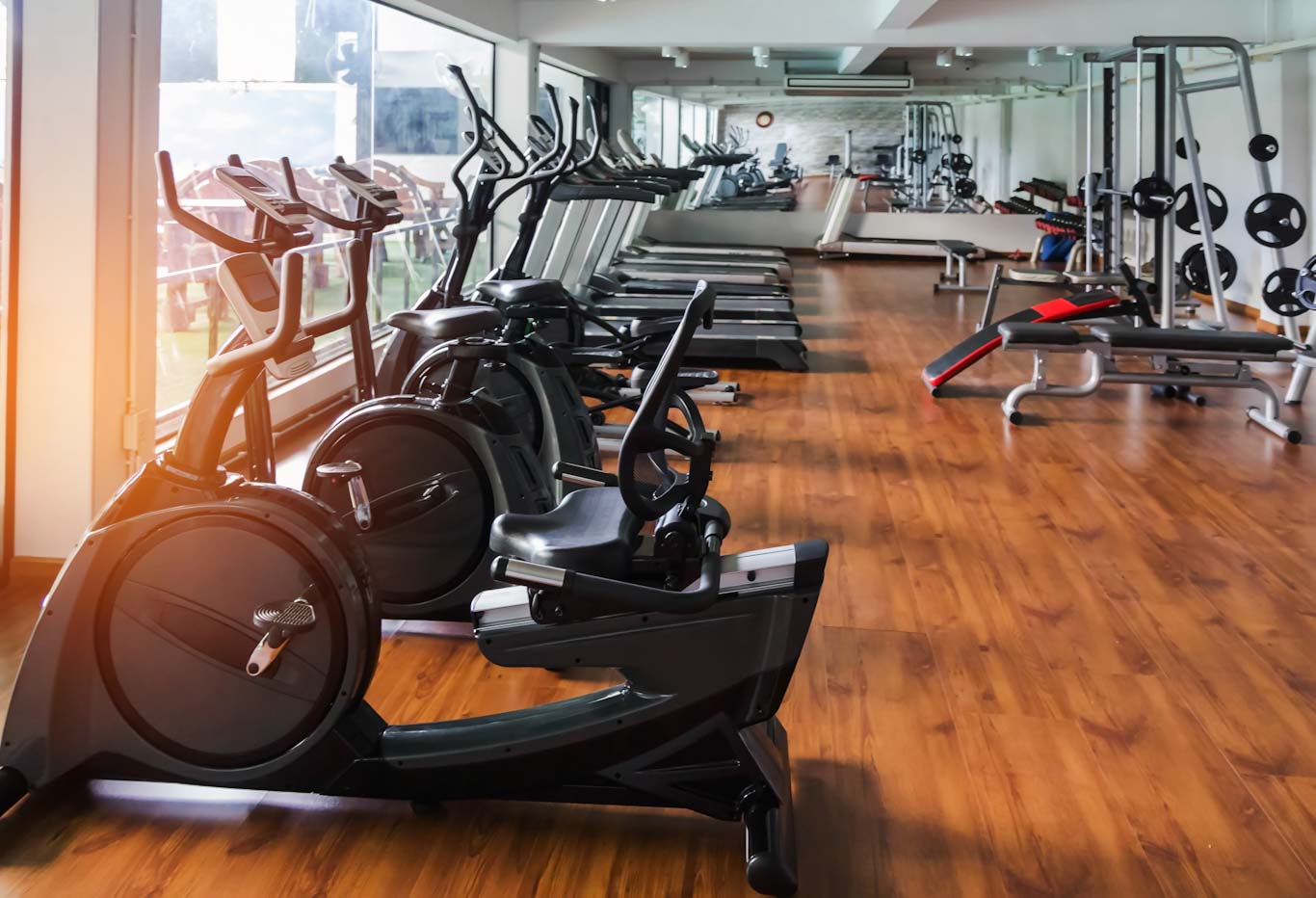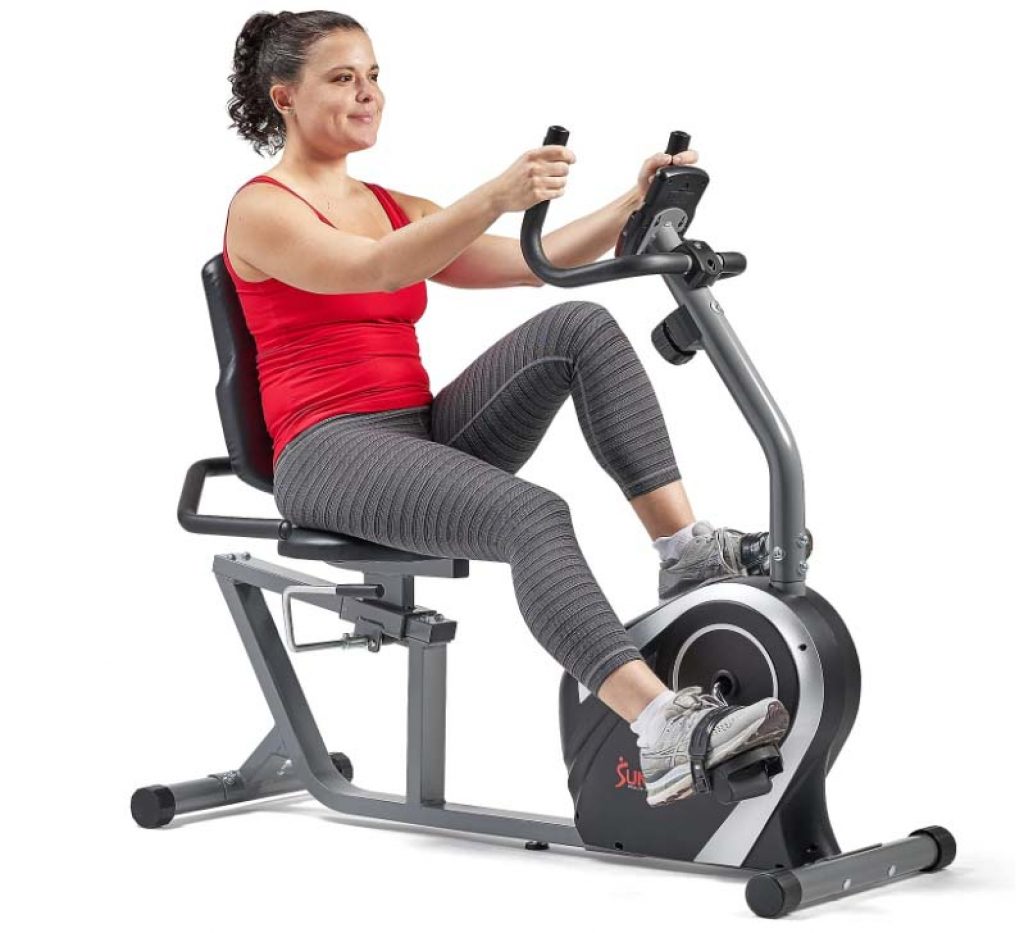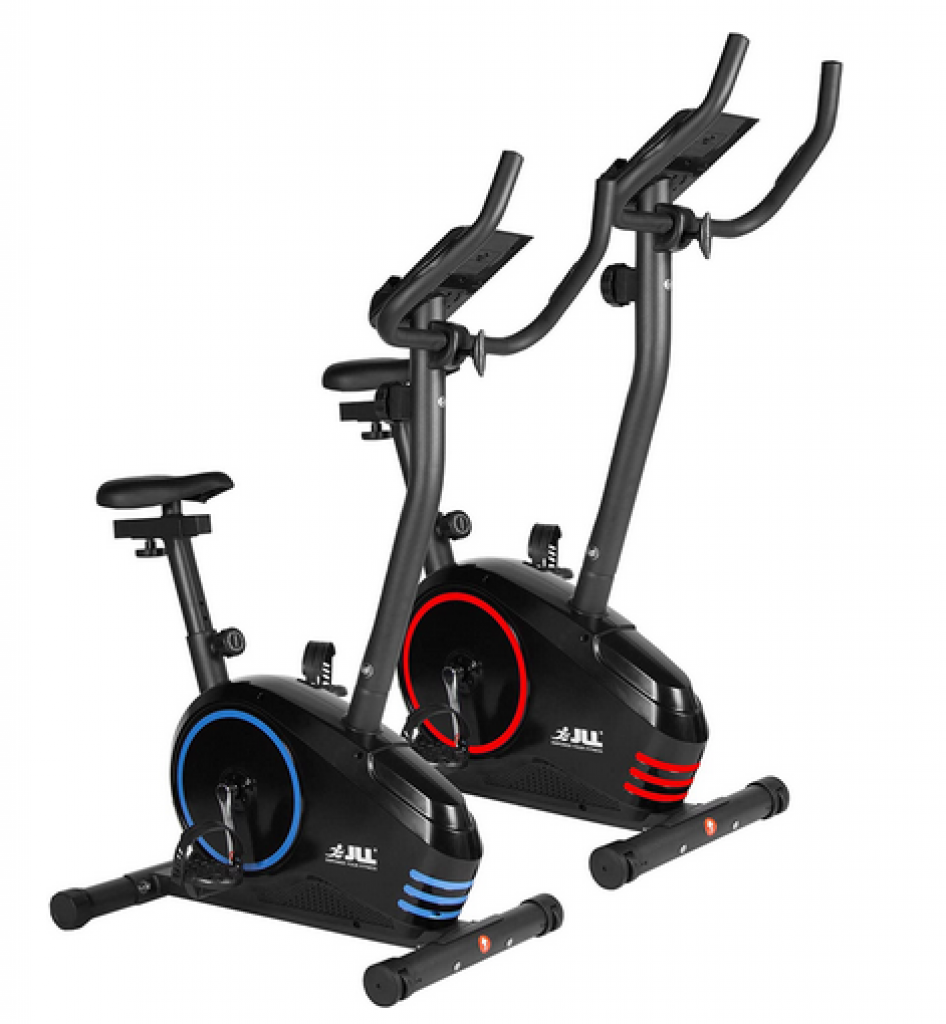Recumbent Exercise Bike vs. Upright Exercise Bike: Which is Right for You?

Are you ready to pedal your way to fitness? Exercise bikes have become a popular choice for achieving cardiovascular health and shedding unwanted pounds without leaving the comfort of your home. But with so many options available, how do you choose between a recumbent exercise bike and an upright exercise bike? In this comprehensive guide, we’ll explore the key differences, benefits, and help you make an informed decision based on your fitness goals and personal preferences.
Understanding Recumbent Exercise Bikes

Recumbent exercise bikes offer a unique and comfortable riding experience. The design features a reclined seat with a backrest, providing excellent support for your lower back and reducing the strain on your joints. Let’s delve into the benefits of recumbent bikes.
Comfort and Back Support
Unlike upright bikes, recumbent bikes allow you to sit in a relaxed position with your feet extended forward. This ergonomic design significantly reduces the risk of discomfort or strain during longer workouts, making them ideal for individuals with back issues or seniors seeking low-impact exercise options.
Reduced Impact on Joints
Recumbent bikes provide a smooth and fluid pedalling motion that puts minimal stress on your joints. The recumbent position distributes your body weight evenly, alleviating pressure on your knees, ankles, and hips. This makes recumbent bikes an excellent choice for those recovering from injuries or dealing with joint pain.
Suitable for Individuals with Physical Limitations
Recumbent bikes offer easy accessibility, making them suitable for individuals with limited mobility or balance issues. The step-through design allows for easy mounting and dismounting, eliminating any potential safety concerns.
Muscle Groups Targeted by Recumbent Bikes
While recumbent bikes primarily engage the glutes, quadriceps, and hamstrings, they also activate the calf muscles and provide a low-intensity workout for your core muscles.
Comparison of Calories Burned during Recumbent Biking
Although recumbent biking is generally considered less intense than upright biking, it can still be an effective calorie burner. A 30-minute session on a recumbent bike can help you burn approximately 200-300 calories, depending on factors such as weight, intensity, and duration.
Understanding Upright Exercise Bikes

Upright exercise bikes offer a more traditional cycling experience, resembling outdoor biking. Let’s explore the benefits they provide.
Mimicking Outdoor Cycling Experience
If you enjoy the feeling of riding a traditional bicycle, an upright exercise bike is the closest option you’ll find indoors. The upright position engages your core and upper body, giving you a more intense workout that closely simulates riding on the road.
Engaging Core and Upper Body Muscles
Unlike recumbent bikes, upright bikes require you to maintain an upright posture, which engages your abdominal muscles, obliques, and lower back. Additionally, gripping the handlebars works your arm, shoulder, and chest muscles, providing a more comprehensive total-body workout.
Suitable for High-Intensity Workouts
Upright bikes offer greater resistance and allow for higher intensity workouts. By incorporating intervals, sprints, and hill climbs, you can push your cardiovascular system to new heights and burn a higher number of calories in a shorter period.
Muscle Groups Targeted by Upright Bikes
Upright bikes primarily target the quadriceps, hamstrings, and calves. The upright position engages your core muscles, providing stability and strengthening your abdominal muscles, lower back, and glutes.
Comparison of Calories Burned during Upright Biking
Due to the higher intensity and increased muscle engagement, upright biking generally burns more calories compared to recumbent biking. A 30-minute session on an upright bike can help you burn approximately 300-500 calories, depending on factors such as weight, intensity, and duration.
Recumbent vs. Upright Bikes for Weight Loss
When it comes to weight loss, both recumbent and upright bikes can be effective. However, there are a few factors to consider when choosing the right bike for your weight loss journey.
Body Position and Intensity
Recumbent bikes provide a comfortable and low-impact workout, making them suitable for individuals who are new to exercise or have joint issues. While they may burn fewer calories per session, their comfort allows for longer workouts, leading to a higher overall calorie expenditure.
On the other hand, upright bikes offer a more intense workout that can elevate your heart rate and burn calories at a faster rate. The upright position engages more muscles, resulting in a higher metabolic demand during shorter workouts.
Weight Loss Potential
Ultimately, weight loss is determined by the number of calories burned and the consistency of your workouts. Both recumbent and upright bikes can help you achieve your weight loss goals, but it’s essential to choose the bike that aligns with your comfort, preferences, and long-term commitment to exercise.
Recumbent vs. Upright Bikes: Muscle Groups Targeted
To get a better understanding of how recumbent and upright bikes differ in terms of muscle engagement, let’s take a closer look at the specific muscle groups worked by each bike.
Recumbent Biking: Muscle Groups Engaged
Recumbent bikes primarily target the glutes, quadriceps, and hamstrings. The pedalling motion also activates the calf muscles to a lesser extent. While the engagement of the core muscles is relatively lower compared to upright biking, the constant support of the backrest allows for an effective yet gentle core workout.
Upright Biking: Muscle Groups Engaged
Upright bikes engage a wider range of muscles due to the upright position and the need for balance and stability. In addition to the glutes, quadriceps, and hamstrings, upright biking heavily targets the core muscles, including the abdominals, obliques, and lower back. Gripping the handlebars also engages the arm, shoulder, and chest muscles.
Recumbent vs. Upright Bikes: Exercise and Cardiovascular Health
While both recumbent and upright bikes contribute to cardiovascular health, they offer different workout options and intensity levels.
Impact on Cardiovascular Fitness
Both recumbent and upright bikes provide effective cardiovascular workouts that increase heart rate and improve endurance. The choice between the two depends on your current fitness level, personal preferences, and any physical limitations you may have.
Comparison of Intensity Levels and Workout Options
Recumbent bikes offer a more relaxed and low-impact workout, ideal for beginners, seniors, or individuals recovering from injuries. They are suitable for steady-state workouts, longer durations, and lower intensity sessions. Recumbent bikes often feature pre-programmed workouts with varying resistance levels to add variety to your routine.
Upright bikes, on the other hand, offer a higher intensity workout, making them suitable for individuals looking for a more challenging cardiovascular exercise. They allow for interval training, high-intensity sessions, and simulated hill climbs to push your limits and boost your fitness level.
Which is Better: Recumbent Bike or Upright Bike?
When it comes to determining which bike is better, it ultimately depends on your personal preferences, fitness goals, and individual needs. Consider the following factors to make an informed decision:
- Comfort and Accessibility: If you prioritize comfort, back support, and easy accessibility, the recumbent bike is an excellent choice. It offers a comfortable and low-impact workout, making it suitable for individuals with back issues, seniors, or those recovering from injuries.
- Intensity and Muscle Engagement: If you prefer a more intense workout that engages your core and upper body, the upright bike is a better option. It mimics the outdoor cycling experience, targets a wider range of muscles, and allows for high-intensity workouts.
- Weight Loss Goals: Both recumbent and upright bikes can contribute to weight loss, but the choice depends on your preferences and consistency. Recumbent bikes provide a comfortable platform for longer workouts, leading to higher overall calorie expenditure, while upright bikes offer a higher calorie burn in shorter, more intense sessions.
- Fitness Level and Physical Limitations: Consider your current fitness level and any physical limitations you may have. Recumbent bikes are suitable for individuals at various fitness levels and those with joint issues or limited mobility. Upright bikes are better suited for individuals with good balance and stability.
In the end, the best bike for you is the one that you enjoy using and can commit to consistently. Remember, the key to successful fitness is finding an exercise routine that you love and that fits your lifestyle.
Recumbent Bike We Recommend
Sunny Health & Fitness Recumbent Bike SF-RB4616S
Sunny Health & Fitness has been serving its loyal customers with quality fitness products for more than two decades. Their exercise bikes are a great example of the quality guarantee they have been serving for 20+ years.
Sunny Health & Fitness Recumbent Bike offers 8 resistance levels. What sets it apart is the convenient step-through design which makes it easier and safer to get on and off the bike. Forget about the strain on your back and legs.
Moreover, the bike comes with textured non-slip foot pedals. The material ensures you get a secure and comfortable grip while riding. No matter what size you are, the grip helps with smooth pedalling.
The bike also comes with a built-in device holder. The users can watch their favourite movies or series while working out.
You can track various workout parameters on the monitor, and the bike can also monitor your heart rate with the built-in pulse-sensing grips.
Sunny Health & Fitness Recumbent Bike is battery-powered, and it can move around and adjust in any room with the help of transport wheels. The bike comes with an adjustable seat. The users can adjust it according to their heights. The best part is the extra padding, which is ideal to enjoy long, comfortable workouts.
Plus, the easy seat adjustment handle means you can make changes without getting up from the seat.
The bike is 26.76 kg in weight which is pretty light and can support users up to 136 kg which is quite impressive.
The only reported issue for the bike is that some users have found assembly challenging and time-consuming. But once put together, the exercise bike feels solid and operates smoothly and quietly.
With four and a half-star rating on Amazon, it’s clear that users appreciate the comfortable seating and sturdy design of the Sunny Health & Fitness Recumbent Bike SF-RB4616S.
Upright Bike We Recommend
JLL® JF150 Upright Exercise Bike
JLL Fitness LTD is one of the famous and trusted UK-based suppliers of fitness products. The supplier is highly focused on quality. The JLL® JF150 Upright Exercise Bike comes with plenty of cool features you might be seeking. Its competitive price makes it one of the best sellers on UK Amazon.
The JLL® JF150 is not only made to the highest standards, but this bike also fulfils the CE, UKCA, and EN957 standards in terms of safety. You won’t find any compromise on build quality in this product.
This upright exercise bike offers a fully adjustable seat (with comfortable padding) and handlebars. The maximum seat height is 98cm. The foot straps ensure better safety and grip. The entire frame is strong alloy steel which is finished with hard-wearing. You will also find a durable coating to ensure the prevention of early wear and tear.
The JLL® JF150 Exercise Bike comes with 8 levels of resistance to provide complete control of your exercise routine. It is a battery-powered bike. If you have limited space at home, this bike can be an ideal choice. You can transport it anywhere; thanks to the end caps that double up as wheels.
It comes with a phone/tablet holder and can handle up to 100kg. This belt-driven bike is quieter and smoother than one expects. The LCD monitor keeps you updated with heart rate, time, calories, distance, and speed.
The only issue reported by the users was a bit challenging assembly. Otherwise, it is a good option at this price.
With a 4.3 star rating on Amazon, the JLL® JF150 Upright Exercise Bike is for everyone. It is definitely a product that provides value for money to the customers.
Conclusion
So, what is the difference between a recumbent bike and an upright bike? Recumbent bikes prioritize comfort, back support, and low-impact workouts, while upright bikes provide a more intense, total-body workout that simulates outdoor cycling. In the battle between recumbent exercise bikes and upright exercise bikes, there is no clear winner. Both types of bikes offer unique benefits and cater to different fitness goals and personal preferences.
If possible, try out both types of bikes at your local gym or fitness equipment store to get a firsthand experience. Remember to consider your comfort, fitness goals, and any physical limitations you may have. The right choice is the one that keeps you motivated and consistent in your fitness journey.
So, whether you’re a fitness enthusiast looking for a challenging workout or a senior seeking a comfortable and low-impact exercise option, there’s an exercise bike out there for you. Get pedalling, enjoy the benefits of indoor cycling, and take a step towards better health and fitness!
References and further readings:
- Recumbent Bike Benefits
- Overview of Exercise Bike Types & Their Benefits
- Electromyography during pedalling on upright and recumbent ergometer – Int J Sports Phys Ther. 2014 Feb
- Lower-extremity joint kinematics and muscle activations during semi-reclined cycling – J Neuroeng Rehabil. 2014 Oct 17
- Functional roles of the leg muscles when pedalling in the recumbent vs. the upright position – J Biomech Eng 2005 Apr










